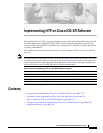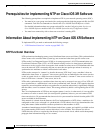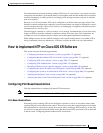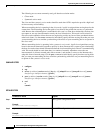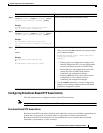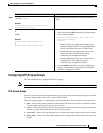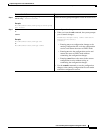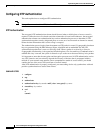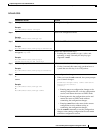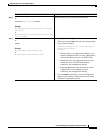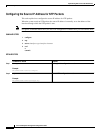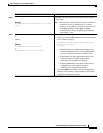
Implementing NTP on Cisco IOS XR Software
How to Implement NTP on Cisco IOS XR Software
SMC-171
Cisco IOS XR System Management Configuration Guide
The communications between machines running NTP (known as “associations”) are usually statically
configured; each machine is given the IP address of all machines with which it should form associations.
Accurate timekeeping is made possible by exchanging NTP messages between each pair of machines
with an association.
However, in a LAN environment, NTP can be configured to use IP broadcast messages instead. This
alternative reduces configuration complexity, because each machine can simply be configured to send or
receive broadcast messages. However, the accuracy of timekeeping is marginally reduced because the
information flow is one-way only.
The time kept on a machine is a critical resource, so we strongly recommend that you use the security
features of NTP to avoid the accidental or malicious setting of incorrect time. Two mechanisms are
available: an access list-based restriction scheme and an encrypted authentication mechanism.
When multiple sources of time (VINES, hardware clock, manual configuration) are available, NTP is
always considered to be more authoritative. NTP time overrides the time set by any other method.
How to Implement NTP on Cisco IOS XR Software
This section contains the following procedures:
• “Configuring Poll-Based Associations” section on page SMC-171 (optional)
• “Configuring Broadcast-Based NTP Associations” section on page SMC-173 (optional)
• “Configuring NTP Access Groups” section on page SMC-175 (optional)
• “Configuring NTP Authentication” section on page SMC-178 (optional)
• “Disabling NTP Services on a Specific Interface” section on page SMC-180 (optional)
• “Configuring the Source IP Address for NTP Packets” section on page SMC-182 (optional)
• “Configuring the System as an Authoritative NTP Server” section on page SMC-184 (optional)
• “Updating the Hardware Clock” section on page SMC-185 (optional)
• “Verifying the Status of the External Reference Clock” section on page SMC-187 (optional)
Configuring Poll-Based Associations
This task explains how to configure poll-based NTP associations.
Note No specific command enables NTP; the first NTP configuration command that you issue enables NTP.
Poll-Based Associations
Networking devices running NTP can be configured to operate in variety of association modes when
synchronizing time with reference time sources. There are two ways that a networking device can obtain
time information on a network: by polling host servers and by listening to NTP broadcasts. In this task,
we will focus on the poll-based association modes. Broadcast-based NTP associations will be discussed
in the next task, “Configuring Broadcast-Based NTP Associations.”



